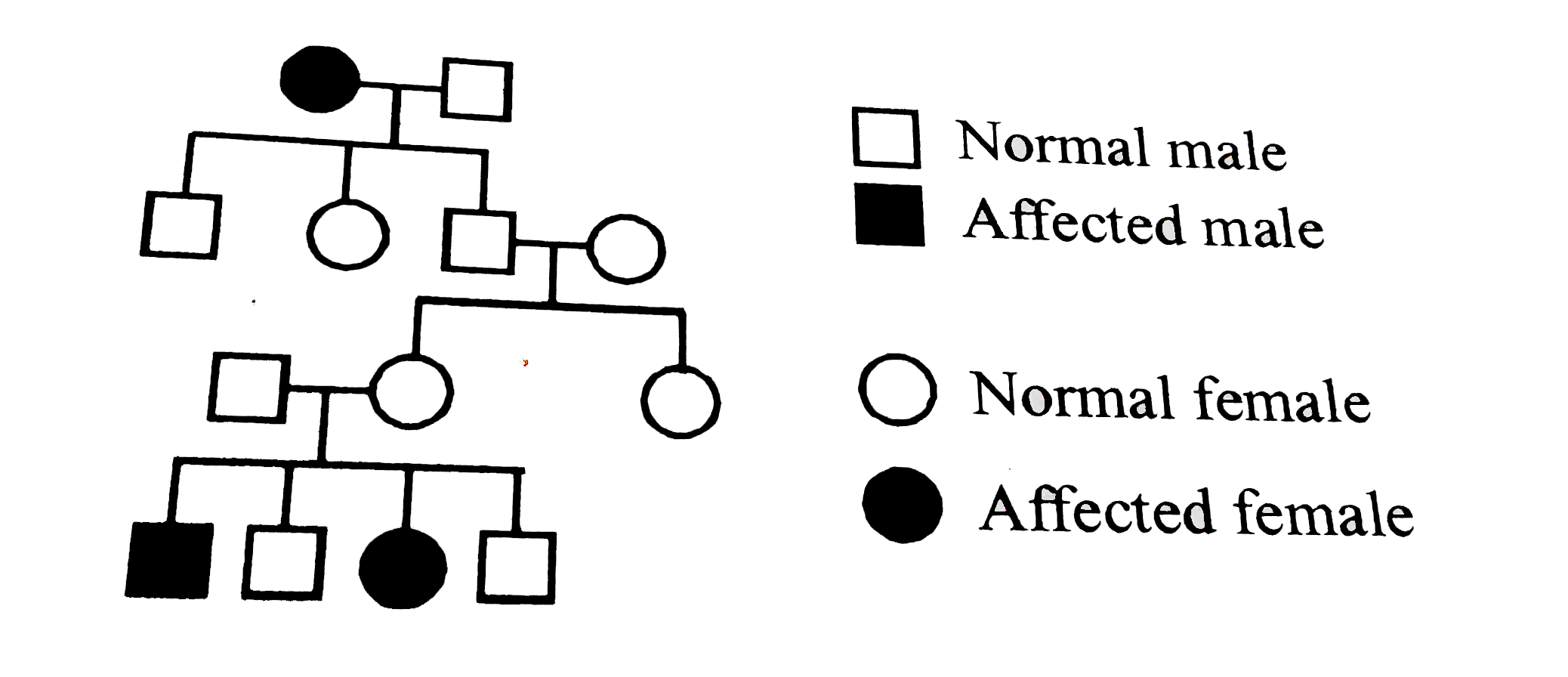Mendel studied which type of inheritance.
Polygenic inheritance
Quantitative inheritance
Qualitative inheritance
Cytoplasmic inheritance
The correct Answer is:C
Step-by-Step Text Solution:
1. Understanding Mendel's Contributions: Gregor Mendel, often referred to as the father of genetics, conducted experiments on pea plants to understand how traits are inherited from one generation to the next.
2. Types of Inheritance: Mendel's studies primarily focused on inheritance patterns that involve single traits controlled by single genes. This is known as qualitative inheritance.
3. Qualitative Inheritance: In qualitative inheritance, traits are determined by a single gene with two alleles (dominant and recessive). For example, in Mendel's pea plants, he studied traits like flower color and seed shape, which were controlled by one gene with two alleles.
4. Exclusion of Other Inheritance Types:
- Polygenic Inheritance: This involves multiple genes controlling a trait, which was not the focus of Mendel's work.
- Quantitative Inheritance: This refers to traits that are influenced by multiple genes and show continuous variation, which Mendel did not study.
- Cytoplasmic Inheritance: This involves traits controlled by genes in organelles like mitochondria and chloroplasts, which was also not part of Mendel's research.
5. Conclusion: Therefore, Mendel primarily studied qualitative inheritance, where traits are determined by single genes with dominant and recessive alleles.
---
- Polygenic Inheritance: This involves multiple genes controlling a trait, which was not the focus of Mendel's work.
- Quantitative Inheritance: This refers to traits that are influenced by multiple genes and show continuous variation, which Mendel did not study.
- Cytoplasmic Inheritance: This involves traits controlled by genes in organelles like mitochondria and chloroplasts, which was also not part of Mendel's research.
Similar Questions
Knowledge Check
- Question 1 - Select One
Mendel enunciated principles of inheritance
ATwoBThreeCFourDFive - Question 2 - Select One
The organism chosen by Mendel to explain the laws of inheritance was:
AHomo sapiensBPisum sativumCAntirrhinum majusDDrosophia melanogaster - Question 3 - Select One
The essential observation made by Mendel in his experiments on inheritance in pea plants was that
AParental characters that were not exhibited in the F1 generation reappeared in the F2BGenetic information was encoded in DNA sequenceCA3: 1 phenotypic ratio (dominant: recessive) was exhibited by the F2 generationDA3: 1 phenotypic ratio (recessive: dominant) was exhibited by the F2 generation.
Study the pedigree given below and assing the type od inheritance of the trait.
 View Solution
View SolutionMendel's principles of inheritance are based on
View SolutionGregor Johann Mendel came up with the theory of inheritance by studying:
View SolutionThe discipline which deals with the study of inheritance of characters is
View SolutionMendel was the first scientist to study the pattern of inheritance. He is known as the father of genetics and proposed the laws of inheritance. He selected pea plants (Pisum sativum) to carry out his study on the inheritance of characters from parents to offspring. Mendel carried the process of self-pollination followed by cross-pollination in his experiment.
Which of these is a dominant trait?View Solution
